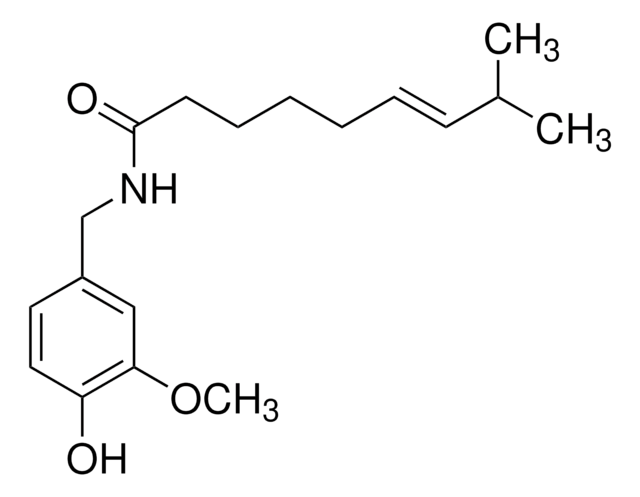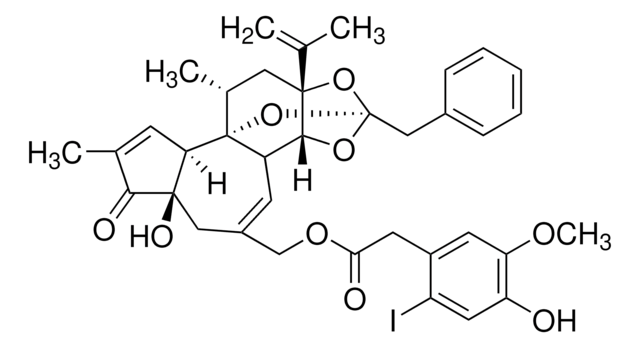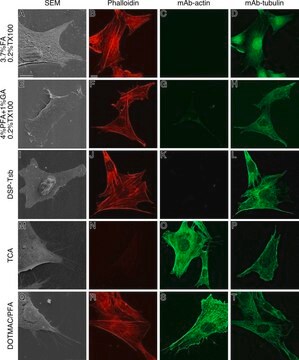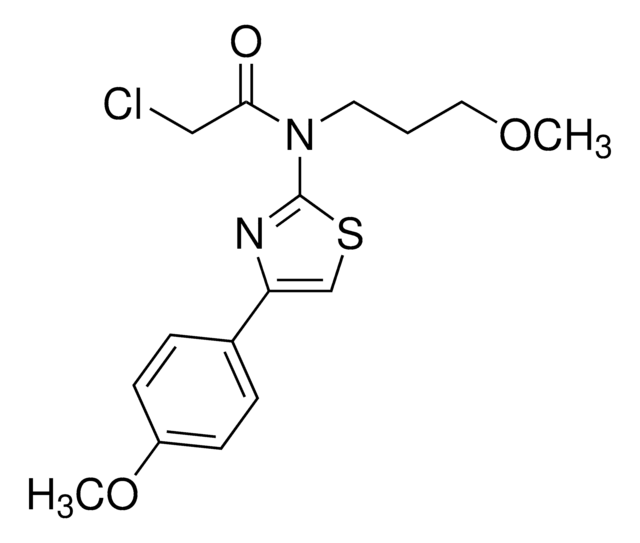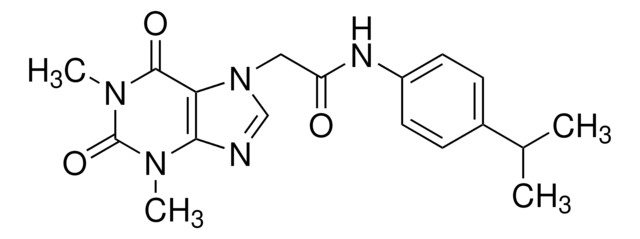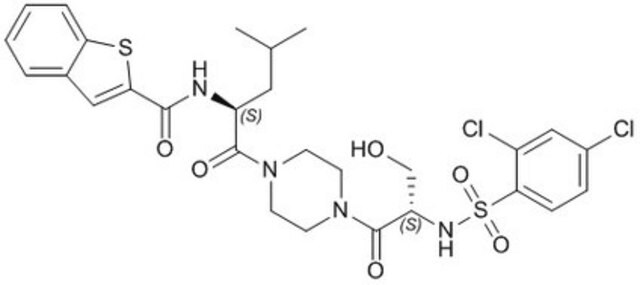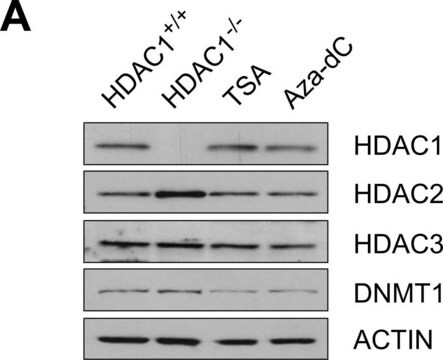R8756
Resiniferatoxin
from Euphorbia poisonii, ~95%
About This Item
Produtos recomendados
fonte biológica
Euphorbia poisonii
Nível de qualidade
Ensaio
~95%
temperatura de armazenamento
−20°C
cadeia de caracteres SMILES
[H][C@@]12C=C(C)C(=O)[C@@]1(O)CC(COC(=O)Cc3cc(O)cc(OC)c3)=CC4[C@H]5O[C@]7(Cc6ccccc6)O[C@]5(C[C@@H](C)[C@]24O7)C(C)=C
InChI
1S/C37H40O9/c1-21(2)35-17-23(4)37-29(33(35)44-36(45-35,46-37)19-24-9-7-6-8-10-24)14-26(18-34(41)30(37)11-22(3)32(34)40)20-43-31(39)15-25-12-27(38)16-28(13-25)42-5/h6-14,16,23,29-30,33,38,41H,1,15,17-20H2,2-5H3/t23-,29?,30-,33-,34-,35-,36-,37-/m1/s1
chave InChI
IKYCZSUNGFRBJS-PMIKMUNESA-N
Informações sobre genes
rat ... Trpv1(83810)
Aplicação
- for complex preparation for cryo-electron microscopy structural studies
- to test its effect towards immune responses to P. aeruginosa in sensory neurons associated with the cornea
- to study its effects in the denervation of the peripheral sensory nerves in psoriatic mice
Ações bioquímicas/fisiológicas
Palavra indicadora
Danger
Frases de perigo
Declarações de precaução
Classificações de perigo
Acute Tox. 3 Oral - Skin Corr. 1A
Código de classe de armazenamento
6.1C - Combustible acute toxic Cat.3 / toxic compounds or compounds which causing chronic effects
Classe de risco de água (WGK)
WGK 3
Ponto de fulgor (°F)
Not applicable
Ponto de fulgor (°C)
Not applicable
Equipamento de proteção individual
Eyeshields, Faceshields, Gloves, type P3 (EN 143) respirator cartridges
Escolha uma das versões mais recentes:
Já possui este produto?
Encontre a documentação dos produtos que você adquiriu recentemente na biblioteca de documentos.
Nossa equipe de cientistas tem experiência em todas as áreas de pesquisa, incluindo Life Sciences, ciência de materiais, síntese química, cromatografia, química analítica e muitas outras.
Entre em contato com a assistência técnica